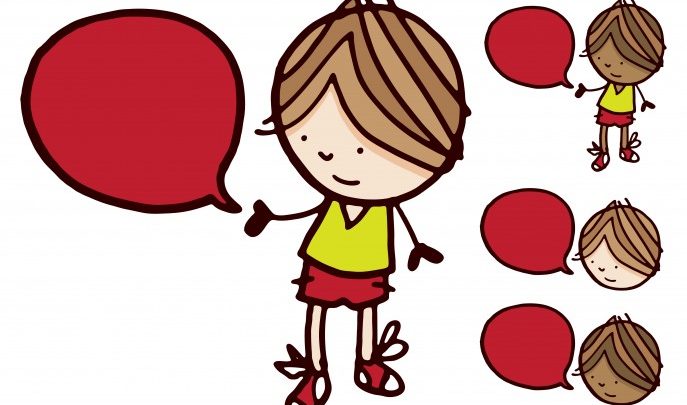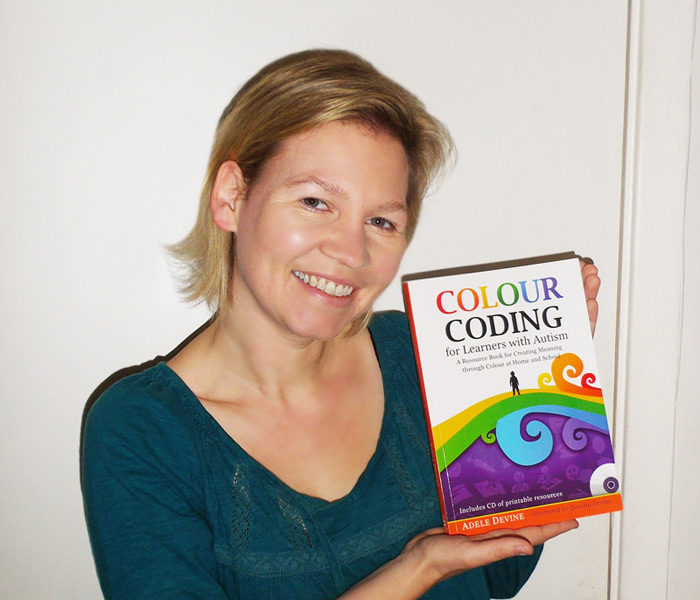How Children Who Don’t Speak Can Say It With Switches

The more you use hi-tech communication tools with children, the more creative you will become

- by Adele Devine
- Early years and SEN specialist, author, keynote speaker and trainer Visit website

What if you woke up this morning with no voice at all? Think about all the times you speak – answering questions, having conversations, asking for help, reading a story or sharing your ideas. Imagine the feelings of frustration, isolation, insecurity and anxiety if you were no longer able to do any of it.
There seem to be more and more children starting school with speech and language difficulties. Some children may not speak because English is their second language, some will have delayed speech and develop perfectly well as they get older. Some children may be painfully shy or even elective mute in school, while others will have a physical disability or be on the autism spectrum.
Look at your setting through the eyes of a child who does not speak. They may have no idea about any of your rules, routines or expectations. We must find a way to communicate with these children and give them a chance to speak. First we must provide visuals and begin to teach them to use Pictures Communication Systems (PECS).
We model speech. We may use Pragmatic Organisation Dynamic Display (PODD) systems and Makaton signs to clarify meaning when we speak. We may be lucky enough to have access to Eye Gaze systems, or we may use the lower-tech option (watching where they look). We have provided the best ways to develop speech, but what about those feelings of frustration and isolation? We must provide another way so that the non-speaking child can also have a voice.
Speaking through switches
Switches come in all shapes and sizes to suit individual needs. They can be used to enable those with physical disabilities to have control over cause and effect and develop choice-making skills. Switches can give the pre-verbal child a voice and help teach them that they can have some control and make choices. When you have never had the opportunity to make a choice, this can be a daunting prospect.
If you are teaching a child and considering using switches I’d recommend reading Ghost Boy by Martin Pistorius. He explains what it is like to be fully aware, but living in an unresponsive body and how his first experience of using switches made him feel “triumphant”, but also fearful: “I know most people make thousands of decisions every day about what to eat and what to wear, where to go and who to see, but I’m not sure I’ll be able to make even one. It’s like asking a child who has grown up in the desert to throw themselves into the sea.”
There are switches that we can use to record words, phrases or even song verses. These switches are incredibly easy to use and many have a clear plastic panel which lifts off so that you can slot in a photograph or symbol underneath.
The idea is that the child physically presses the switch and hears a pre-recorded message. The switch should be easy to record into and ideally have a volume control.
In practice
The more you use switches with children, the more creative you will become. For example, during our circle time, we sing ‘Good Morning’ to each child.
We have photos of everyone and teach the children to select their photo by lifting it or by looking at it. We then place the photo on the Big Mack switch so that it is clear it is their turn, and we sing:
Staff: “Tilly Trafford, Tilly Trafford, where are you?”
The children will respond by singing or pressing a Big Mack switch with the response to our ‘Good Morning’ song pre-recorded.
Child: “Here I am, here I am. How do you do?”
You’ll find more suggestions about using switches in the panel at the end of this post.
CASE STUDY
‘Switches for a snack’
The issue Tilly loved her food. We hoped we could use this to get her using PECS at snack-time. We laminated big photos, and my assistant supported Tilly to hand it over, but no matter how many times we repeated this, Tilly did not lift the photo independently.
Next we tried fixing the photo to the top of a wooden block to make it easier to grab hold of. Tilly would lift it with support, but did not show signs of being independent.
Make a request I met with our speech therapist and we discussed how we could move Tilly on with communication. The usual PECS approach was not working. We knew that we had the motivator, but Tilly wasn’t showing any sign of lifting a symbol and handing it over.
We decided to try using a Big Mack switch with a photo of the snack on top and the word recorded. Tilly took to this straight away. She would hit the switch and get her snack. She was really consistent with this. We introduced smaller switches and Tilly was able to use these too.
SPEAK TO ME
10 ways to use switches in your setting
• Saying ‘Yes’ or ‘No’ • Making choices • Answering a question • Making a request • Saying a line in a play • Responding in a story • Sharing news • Asking for the toilet • Saying ‘stop’ or ‘go’ • Expressing emotions • Experiencing cause and effect
‘Sing a song with switches’
A breakthrough When Lily Anne started at school we noticed how she would respond to singing. I was in the hydrotherapy pool singing ‘Row, row, row your boat’ and when we got to the “if you see a crocodile” verse she responded, making a sound and smiling after I sang, “don’t forget to scream!” This was a huge ‘can do’ moment. Lily Anne had anticipated that moment in the song and responded.
We knew from our home visit that Mum sang to Lily Anne a lot. We let Mum know about the reaction and she said that ‘Row your boat’ was one of Lily Anne’s favourites.
Making choices Each week we have a Music Therapy session. The children were given a choice using pictures to decide which variation of ‘Row, row, row your boat’ they would like. There were six choices. Lily Anne showed great interest in hearing new verses for the familiar song.
As well as providing the laminated pictures, we put the pictures on six small switches. This way the children could press a switch and hear it play the chosen verse. Lily Anne enjoyed experimenting with this. Choosing the songs motivated her to really look at the switches, start discriminating between the pictures and experience making a choice.
CASE STUDY
‘Switches for a snack’
The issue Tilly loved her food. We hoped we could use this to get her using PECS at snack-time. We laminated big photos, and my assistant supported Tilly to hand it over, but no matter how many times we repeated this, Tilly did not lift the photo independently.
Next we tried fixing the photo to the top of a wooden block to make it easier to grab hold of. Tilly would lift it with support, but did not show signs of being independent.
Make a request I met with our speech therapist and we discussed how we could move Tilly on with communication. The usual PECS approach was not working. We knew that we had the motivator, but Tilly wasn’t showing any sign of lifting a symbol and handing it over.
We decided to try using a Big Mack switch with a photo of the snack on top and the word recorded. Tilly took to this straight away. She would hit the switch and get her snack. She was really consistent with this. We introduced smaller switches and Tilly was able to use these too.
SPEAK TO ME
10 ways to use switches in your setting
• Saying ‘Yes’ or ‘No’ • Making choices • Answering a question • Making a request • Saying a line in a play • Responding in a story • Sharing news • Asking for the toilet • Saying ‘stop’ or ‘go’ • Expressing emotions • Experiencing cause and effect










